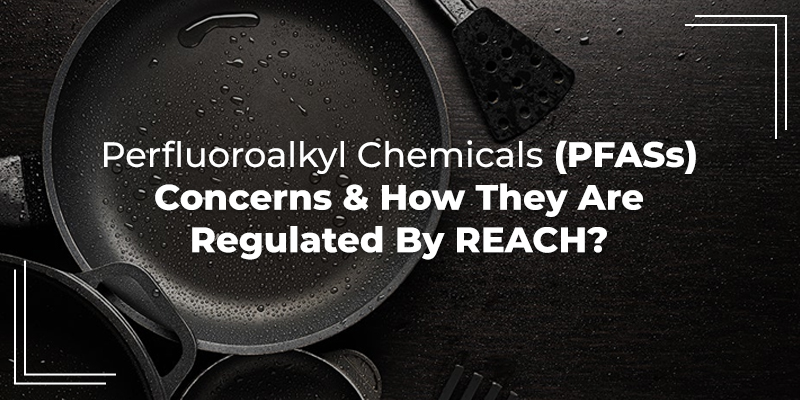
In recent years many chemicals and related substances have been restricted or come with compliance due to their potential risks and hazardous characteristics. One such chemical compound is the Per- And Polyfluoroalkyl Substances (PFASs). The PFAS is a large class of classification which includes thousands of synthetic chemicals that are used in our daily lives. However, it is to be noted that the chemicals from the PFASs classification are detected as the environmental pollutants and have adverse health risks in human beings. Hence, in this blog, we will look into the concerns related to PFASs and how they are regulated under REACH compliance.
PFASs And Their Concerns:
The Per- And Polyfluoroalkyl Substances (PFASs) are organofluorine chemical compounds which are bonded with carbon-fluorine. The carbon-fluorine bonds are considered to be one of the strongest bonds in organic chemistry and resist the degradation significantly. Hence, these compounds reach the landfills through any form and become one of the potential hazards for the environment and human life.
The chemical and physical properties of the PFASs are wide and different compared to other chemical substances. These chemicals can be in the liquid, solid (high-molecular weight polymers), or gas form. The most challenging part of PFASs is that these can be in either short-chain or long-chain molecules but need not cover all the structures under the PFASs class as they are diverse. Similarly, one can sort out the structures under PFASs in many ways making them even more complex.
Even though being a complex structure, the PFASs are widely used in products because of their favourable properties. To be precise, the PFASs are more stable under the high temperature making them to be right repellent and surfactants for the water. The industries that commonly use PFASs are
- Aerospace And Defence
- Food Contact Materials
- Automotive
- Aviation
- Leather And Apparels
- Textiles
- Food Processing
- Construction And Household Products
- Firefighting
- Medical Articles
- Electronics
Even though these PFASs find its application in many sectors, it is constantly seen that these molecules contaminate soil, ground, and surface water. On the other hand, technically it is difficult and expensive for the PFASs to pollute regions. It is also to be noted that if the PFASs release continues, they find their way to drinking water, food, and accumulate two times in the environment.
PFASs Regulated Under REACH:
The PFASs substances are already present in the REACH’s Substances Of Very High Concern (SVCH), like PFHxS and perfluorinated carboxylic acids (C9-14 PFCAs). In the years 2019, 2020, and 2023, three more groups of PFASs are added under the REACH and identified as SVCHs.
- 2,3,3,3-tetrafluoro-2-(heptafluoropropoxy)propionic acid
- perfluorobutane sulfonic acid (PFBS)
- perfluoroheptanoic acid (PFHpA)
These substances are added under this group based on its toxicity, persistence, and mobility which act as threat to living things. There are several more chemicals on the list to be added under REACH in the coming years. Similarly, several coordination groups of EU countries, European Commission, and ECHA have screened PFASs data and proposed a regulatory-work on handling PFASs in groups. It is because regulating by substance is more complex and through covering in PFASs groups is more beneficial. Hence, the steps are taken to assess the PFASs risk in drinking water and food through the existing Drinking Water Directive, and with the assistance of European Food Safety Authority to make the human beings consuming from PFASs.



 +1.585.935.7123
+1.585.935.7123 +91-804-148-6861
+91-804-148-6861